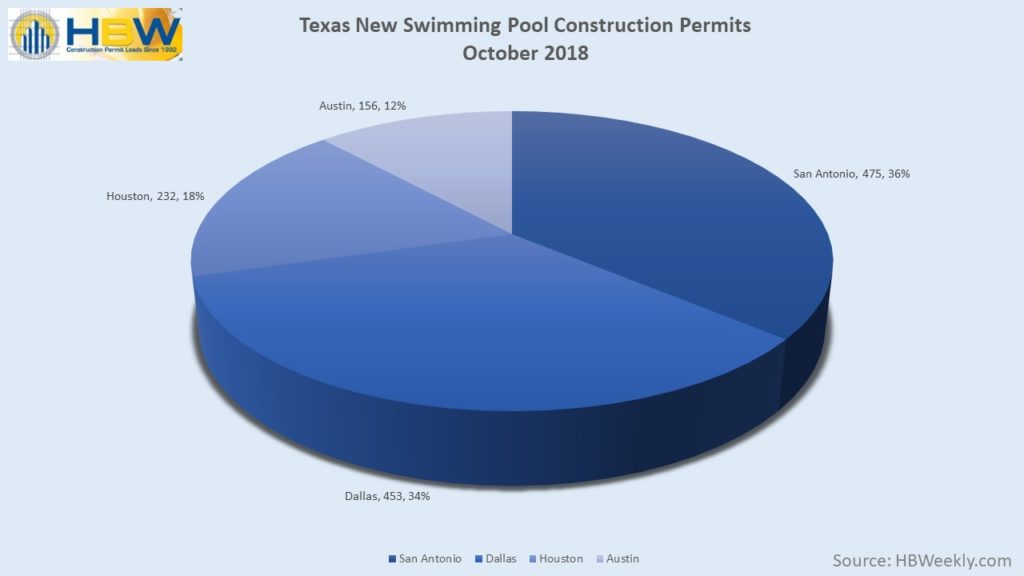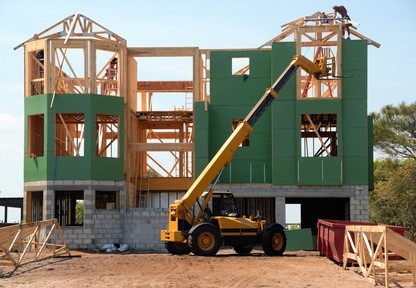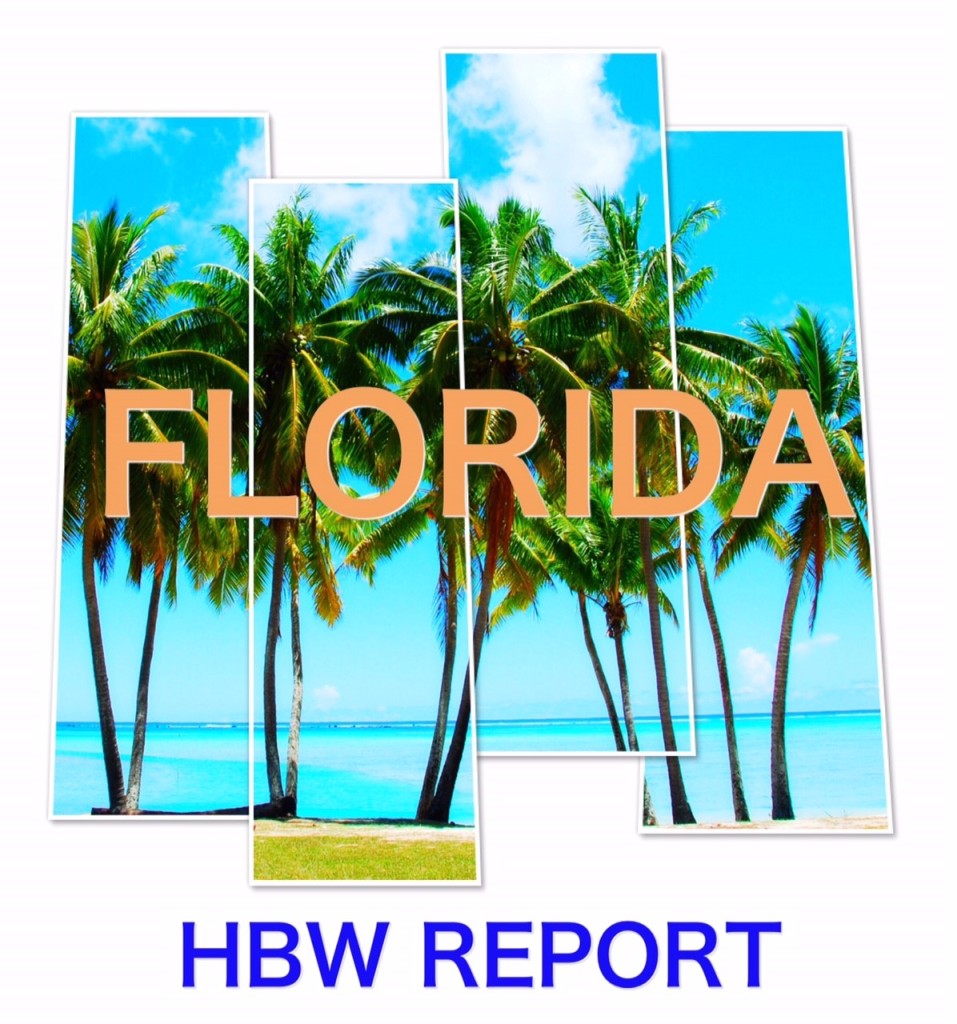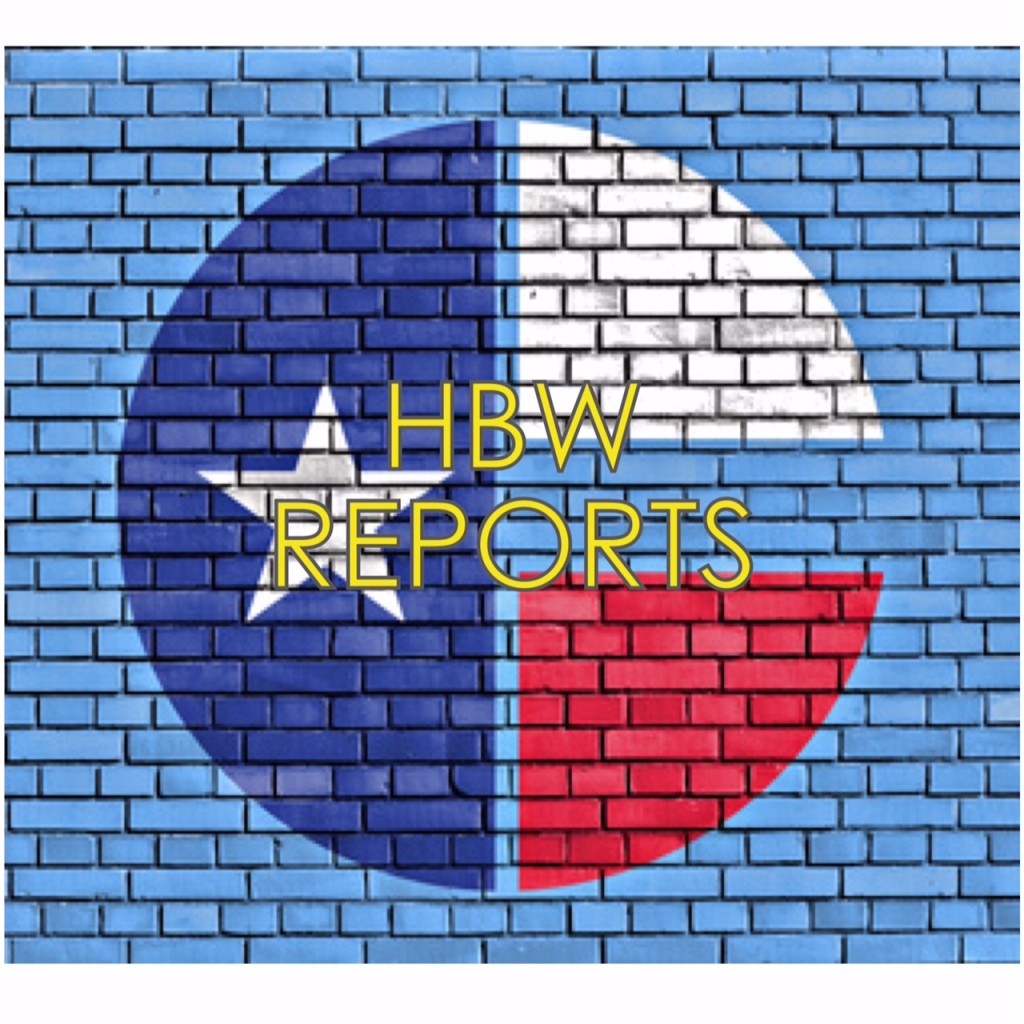An HBW report on the latest swimming pool permits in Florida for the month of October

Last month, there were close to 2,100 new swimming pool permits added to the HBW database for the Sunshine State. Out of the five major regions reviewed (Orlando, Tampa, Jacksonville, Southwest, Southeast), the southwestern region ranked number one for total swimming pool starts (667 permits), while Tampa led for the highest average value of new construction (average construction value: $48,801).
Here is a closer look at new swimming pool construction for the month and by region:
Southwest
Last month, the southwest region held the highest concentration of new swimming pool construction permits out of the five major regions reviewed. There were 667 swimming pool starts with a total construction value in excess of $29.3M in the area.
Out of the 120 active builders on file for the month, the following ranked as the top three in the southwestern region for total new permits:
| #1 Aragon Pools & Spas |
| #2 Pinnacle USA |
| #3 Aquadoc |
Southeast
Ranked second-highest for new swimming pool construction activity, Southeast Florida had nearly 530 pool starts with a total construction value of $20.5M last month. Out of the five major regions reviewed, the southeast held the lowest average value of new pool construction (average value: $38,843).
Out of the 160 active builders in the southeast last month, the following ranked as the top three for total swimming pool starts:
| #1 A & G Concrete Pools |
| #2 Louden Bonded Pools |
| #3 Crystal Pools |
Orlando
In Orlando, there were 330 swimming pool starts with a total construction value in excess of $13.5M last month.
Out of the 70+ active builders on file for the month, the following ranked as the top three for total new permits added to the HBW database:
| #1 Bobs Pool Service Inc |
| #2 Martin Pools Inc |
| #3 All Seasons |
Tampa
In line with Orlando, the Tampa area had 329 new swimming pool permits with a total value exceeding $16M last month.
Out of the 105 active builders on file for the month, the following ranked as the top three for total new pool permits:
| #1 Challenger Pools |
| #2 Gulfstream Pools & Spas |
| #3 Olympus Pools |
Jacksonville
In Jacksonville, there were approximately 240 new swimming pool permits with a total construction value of nearly $10.8M on file last month.
Out of the approximately 75 active builders on file and in the area last month, the following ranked as the top three for total new pool construction permits:
| #1 Pools by John Clarkson |
| #2 All Seasons Pools |
| #3 Surfside Pools & Spas |
To gain more information on the builders, homeowners and permits for the construction activity above, check out HBW for your copy of the latest construction data reports. To gain access to the HBW database and receive custom and detailed reports on the latest residential and commercial building activity in Florida, Georgia, Texas, Alabama, and Oklahoma, please contact HBW for details.









